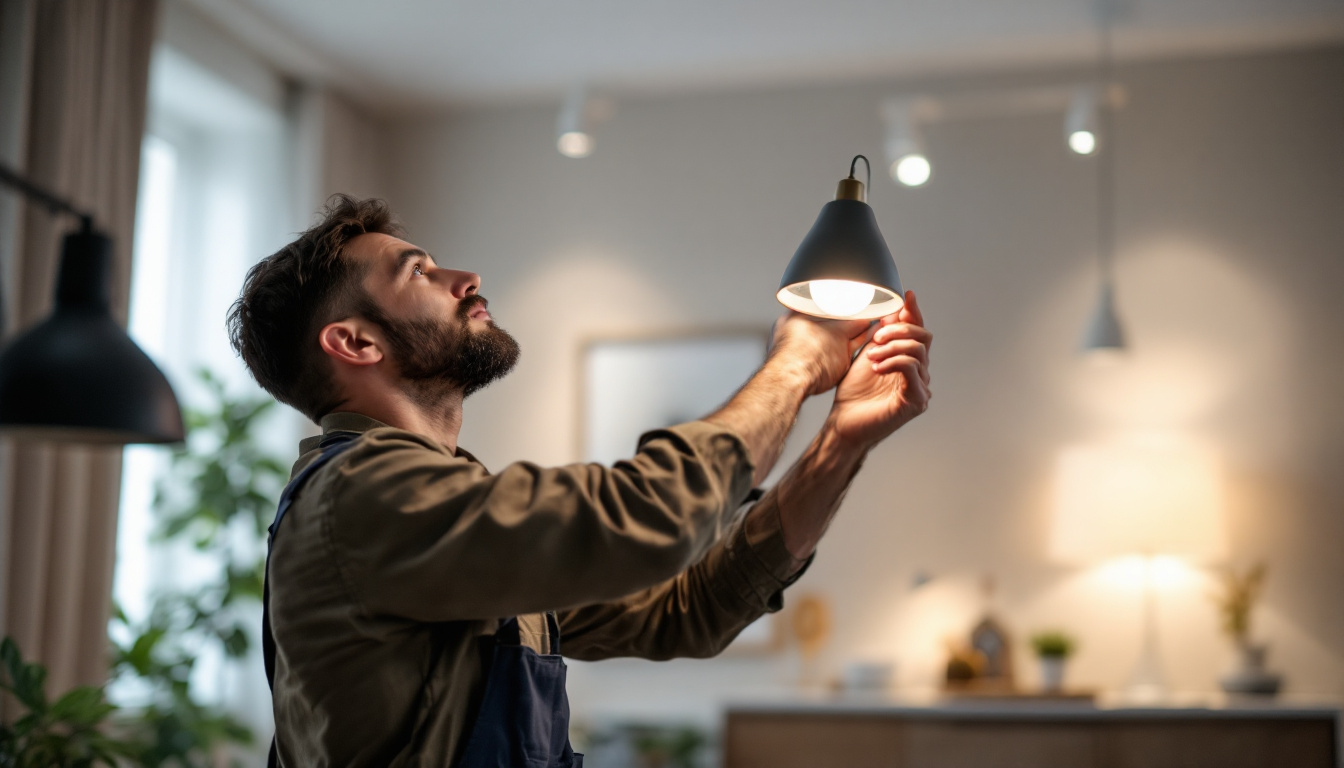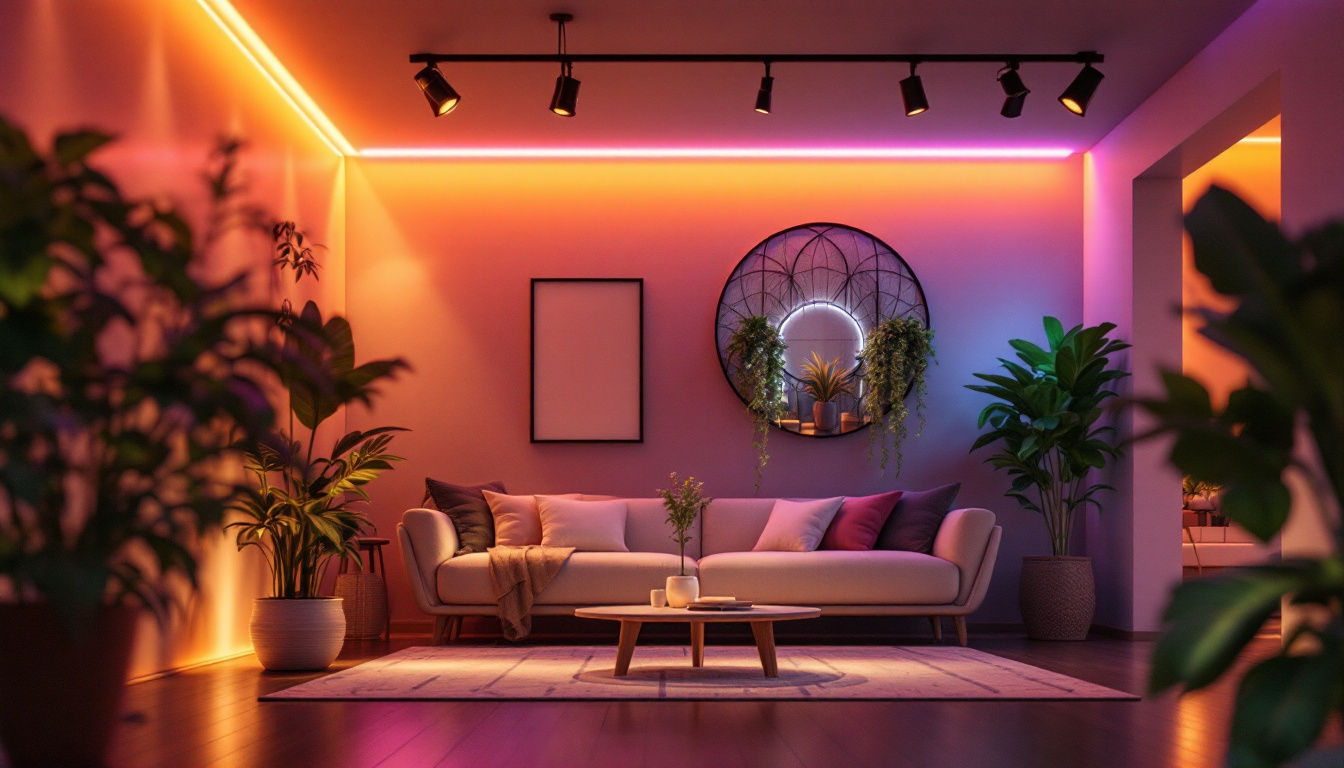
In the world of restaurant design, lighting plays a pivotal role in creating an inviting atmosphere that enhances the dining experience. For lighting contractors, understanding the nuances of restaurant lighting is essential to meet the unique demands of this industry. This article explores best practices for lighting contractors, focusing on how to effectively illuminate restaurants while considering aesthetics, functionality, and energy efficiency.
Lighting in a restaurant goes beyond mere visibility; it sets the mood, highlights architectural features, and influences customer behavior. A well-lit space can enhance the dining experience, encourage longer stays, and even increase sales.
Moreover, the right lighting can help define different areas within a restaurant, such as dining, bar, and waiting areas. Each of these spaces requires a different lighting approach to create a cohesive yet dynamic environment. For example, a bright, inviting entrance can create a welcoming atmosphere, while softer lighting in the dining area can promote relaxation and comfort, encouraging patrons to linger over their meals.
Ambiance is crucial in the restaurant industry. The lighting should complement the restaurant’s theme and décor, whether it’s a cozy bistro or an upscale fine dining establishment. Warm, soft lighting often works well in creating an intimate atmosphere, while brighter, cooler lights can be suitable for casual dining.
Using dimmers and adjustable fixtures allows for flexibility in ambiance, enabling the restaurant to transition from a vibrant lunch setting to a more subdued dinner atmosphere effortlessly. Additionally, incorporating natural light during the day can enhance the dining experience, making the space feel more open and inviting. Large windows or skylights can be a fantastic way to bring the outside in, allowing diners to enjoy the view while basking in the warmth of the sun.
Strategically placed lighting can draw attention to specific areas or features within the restaurant. For instance, accent lighting can highlight artwork, architectural details, or special menu items. This not only enhances the visual appeal but also guides customers’ focus, enhancing their overall experience.
Consider using track lighting or pendant lights over tables to create focal points that encourage conversation and engagement among diners. Such features can significantly contribute to the restaurant’s character and branding. Additionally, backlighting shelves displaying bottles of wine or spirits can create a stunning visual effect, making the bar area a focal point that attracts attention and enhances the overall aesthetic of the space. This thoughtful approach to lighting not only showcases the restaurant’s offerings but also reinforces the establishment’s identity, making it memorable for guests.
When designing a lighting plan for a restaurant, it is important to incorporate various types of lighting to achieve a balanced and functional environment. Each type serves a distinct purpose and contributes to the overall design.
Ambient lighting provides the general illumination needed for a space. It should be soft enough to create a welcoming atmosphere while still allowing diners to see their food and navigate the space comfortably. Common sources of ambient lighting include ceiling-mounted fixtures, chandeliers, and wall sconces.
For restaurants, it is essential to ensure that ambient lighting is evenly distributed to avoid harsh shadows or overly bright spots that can detract from the dining experience. The color temperature of ambient lighting also plays a crucial role; warmer tones can evoke a sense of intimacy, while cooler tones may create a more modern and energetic vibe. Additionally, dimmable fixtures can offer flexibility, allowing the ambiance to shift from lively during peak hours to more subdued during quieter times, enhancing the overall dining experience.
Task lighting is crucial for areas where specific activities take place, such as food preparation and service areas. Bright, focused lighting is needed in kitchens and bars to ensure safety and efficiency. In dining areas, task lighting can be used over tables to provide adequate illumination for reading menus and enjoying meals.
Adjustable fixtures, such as pendant lights or wall-mounted sconces, can provide effective task lighting while maintaining the overall aesthetic of the restaurant. Moreover, the placement of task lighting should be strategically considered; for instance, positioning lights directly above tables can enhance the dining experience by creating a cozy nook for guests, while ensuring that staff can efficiently serve and attend to patrons without any visual hindrance. This thoughtful approach to task lighting not only improves functionality but also contributes to the visual harmony of the restaurant’s design.
Accent lighting adds depth and interest to a restaurant’s design. It can be used to highlight artwork, plants, or architectural features, creating a more dynamic visual experience. This type of lighting is often more dramatic and can include spotlights, track lighting, or LED strips.
Incorporating accent lighting can enhance the restaurant’s branding and create memorable moments for diners, encouraging them to share their experiences on social media. For example, a well-placed spotlight on a signature dish or a unique decor piece can draw attention and spark conversation among guests. Furthermore, accent lighting can be used to create thematic experiences; for instance, a nautical-themed restaurant might utilize blue LED strips to mimic ocean waves, while a rustic eatery could employ warm, amber spotlights to evoke the feeling of a cozy cabin. Such creative applications of accent lighting not only elevate the aesthetic appeal but also deepen the emotional connection diners have with the space, making their visit truly unforgettable.
As the focus on sustainability grows, lighting contractors must consider energy-efficient solutions when designing restaurant lighting. Not only do energy-efficient fixtures reduce operational costs, but they also align with the increasing consumer demand for environmentally responsible practices.
LED lighting is one of the most energy-efficient options available today. It consumes significantly less electricity than traditional incandescent bulbs and has a longer lifespan, reducing the frequency of replacements. Moreover, LED fixtures come in various styles and color temperatures, making them versatile for any restaurant design.
When selecting fixtures, consider options that offer both aesthetic appeal and energy efficiency. Dimming capabilities can also contribute to energy savings, allowing restaurants to adjust lighting levels based on the time of day and occupancy.
Incorporating smart lighting technology can enhance energy efficiency further. Smart systems allow for automated control of lighting based on occupancy, time of day, or even natural light levels. This technology not only reduces energy consumption but also provides flexibility in managing different lighting scenarios throughout the day.
By embracing smart lighting solutions, restaurants can create a more sustainable environment while enhancing the overall experience for diners.
Each type of restaurant has unique lighting needs that should be addressed during the design process. Understanding the specific requirements of various dining establishments can help lighting contractors tailor their approach effectively.
In fine dining restaurants, the lighting should create an elegant and sophisticated atmosphere. Soft, warm lighting is often preferred, with an emphasis on creating intimacy at each table. Chandeliers and wall sconces can add a touch of luxury, while dimmable options allow for adjustments throughout the evening.
Accent lighting can be used to highlight exquisite table settings or artwork, enhancing the overall dining experience. Careful consideration of lighting placement is essential to avoid glare and ensure that diners feel comfortable and relaxed.
Casual dining establishments typically require a more vibrant and energetic atmosphere. Brighter ambient lighting can create a lively environment, encouraging social interaction among diners. Pendant lights and track lighting can be effective in these settings, providing both task and ambient lighting.
Incorporating playful design elements, such as colorful fixtures or unique shapes, can enhance the casual vibe while maintaining functionality. Flexibility in lighting design allows for adjustments based on different times of day and events.
For fast casual and quick service restaurants, the focus is often on efficiency and functionality. Bright, even lighting is essential to facilitate quick dining experiences. LED fixtures can provide the necessary illumination while being energy-efficient.
Task lighting should be strategically placed to ensure that staff can efficiently serve customers, while ambient lighting keeps the space welcoming. The design should also allow for easy maintenance and adaptability to changing trends.
Successful restaurant lighting design often involves collaboration between lighting contractors, interior designers, and architects. This teamwork ensures that the lighting complements the overall design vision while meeting functional requirements.
Open communication is vital throughout the design process. Lighting contractors should be involved early on to provide input on fixture selection, placement, and energy efficiency considerations. This collaborative approach can lead to innovative solutions that enhance the restaurant’s atmosphere and functionality.
Every restaurant has a unique vision that reflects its brand identity. Lighting contractors should take the time to understand the client’s goals and preferences, ensuring that the lighting design aligns with their vision. This may involve discussing color schemes, themes, and desired atmospheres.
By actively engaging with clients, lighting contractors can create customized solutions that not only meet functional needs but also resonate with the restaurant’s overall concept.
The restaurant industry is constantly evolving, with new design trends emerging regularly. Lighting contractors should stay informed about the latest trends in restaurant design and lighting technology to provide clients with innovative solutions. This adaptability can set contractors apart in a competitive market.
Incorporating trending elements, such as biophilic design or vintage-inspired fixtures, can enhance the restaurant’s appeal and attract a broader customer base. Keeping an eye on industry trends ensures that lighting designs remain relevant and engaging.
Effective restaurant lighting is a blend of art and science, requiring a deep understanding of both aesthetics and functionality. Lighting contractors play a crucial role in shaping the dining experience through thoughtful design and innovative solutions.
By adhering to best practices in restaurant lighting, contractors can create environments that not only enhance the dining experience but also contribute to the restaurant’s success. From understanding the importance of ambiance to selecting energy-efficient fixtures, every decision impacts the overall atmosphere and functionality of the space.
As the restaurant industry continues to evolve, lighting contractors must remain adaptable, collaborating with designers and clients to create spaces that are not only visually stunning but also sustainable and efficient. Ultimately, the goal is to illuminate the dining experience, making it memorable for every guest who walks through the door.
Ready to elevate your restaurant lighting designs with the perfect blend of quality and value? Look no further than LumenWholesale. Our extensive selection of spec-grade lighting products is designed to meet the highest industry standards, ensuring your projects shine with reliability and high performance. With unbeatable wholesale prices and the convenience of free shipping on bulk orders, you can trust LumenWholesale to provide superior lighting solutions that enhance any dining experience. Don’t let inflated markups dim your creative vision. Discover the ideal lighting for your next project and enjoy the best value without compromise. Visit LumenWholesale today for Wholesale Lighting at the Best Value.

Discover how flush mount LED lights can elevate your lighting business with increased efficiency and customer satisfaction.

Discover expert tips and innovative strategies for lighting contractors in “Lotus Lighting: Advice for Lighting Contractors.” Enhance your projects with cutting-edge techniques, sustainable solutions, and insights into the latest industry trends.

Explore the science of studio lighting with insights tailored for lighting contractors.

Discover how 8-foot LED strip lights can revolutionize your lighting projects by boosting efficiency and reducing costs.